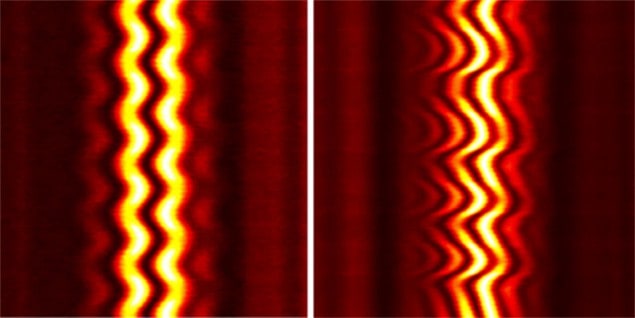
The first direct observations of how “molecules of light” can vibrate have been made by researchers in France, who have characterized the motions of soliton laser pulses that interact with each other in an optical fibre. Such optical molecules could someday boost the amount of data that can be transmitted along an optical fibre by allowing information to be encoded in the vibrational modes.
A soliton is a pulsed wave that retains its shape as it travels through a medium. Solitons can be created in many situations from laser pulses in an optical fibre to water waves in the ocean. Solitons in optical fibres usually involve extremely bright pulses of light, which modify the surrounding fibre so that the pulse is prevented from spreading out in time, as a weaker pulse would do.
This modification means that two solitons in the same region of a fibre will “feel” each other’s presence in the form of an interaction between them. Over the past few decades, physicists have shown that these interactions can sometimes lead to states of two or more soliton structures that resemble molecules.
Vibrational spectra
Previous studies had offered indirect evidence that these soliton molecules can vibrate much like atomic molecules, but it had proven difficult to measure the motions of individual solitons. Now, however, Katarzyna Krupa, Philippe Grelu and colleagues at the University of Burgundy have overcome this problem by tracking the motions of individual solitons in a molecule using a technique called dispersive Fourier-transform (DFT).
The technique involves sending the solitons through an optical fibre that adds a frequency-dependent delay to the signal. This converts the pulse into a waveform that is extended in time. Information about the motion of the solitons can then be extracted from the nature of this waveform.
The team found that pairs of solitons travelling back and forth through the optical cavity of a fibre laser behave much like a diatomic molecule. Specifically, they found that the separation in time between the pulses oscillates with an amplitude of about 1 ps. They also found that the relative phase of the two solitons also oscillates. The team was also able to make significant changes to the internal dynamics of soliton molecules by fine-tuning the cavity.
The research is described in Physical Review Letters.



